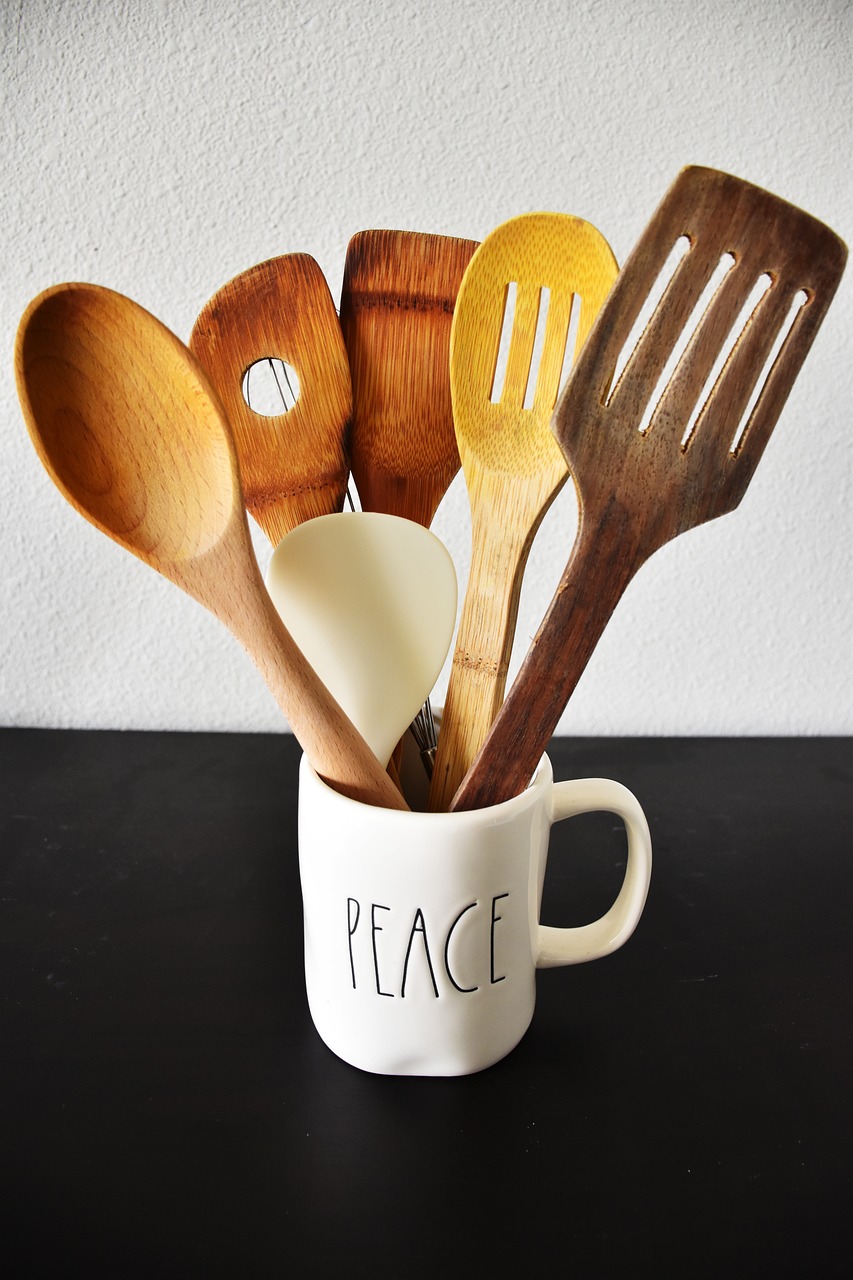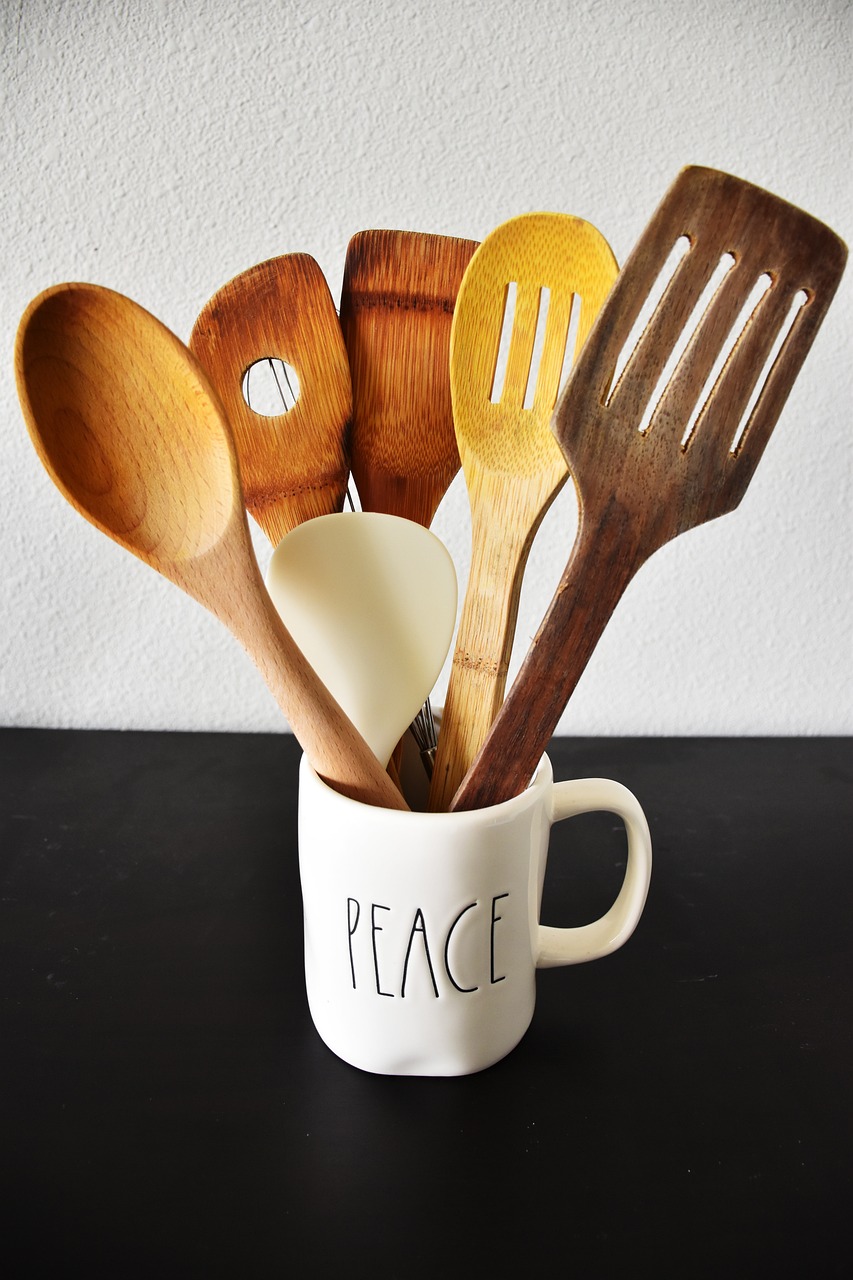Discover the fascinating world of whisks and the science behind their types and uses. Whether you’re an avid home cook or a professional chef, we all know that the right tools can make a world of difference in the kitchen. At Tastepan.com, we understand the importance of having top-quality kitchen equipment that enhances your cooking experience. In this article, we’ll delve into the intricacies of whisk design and explore the various types, each with their unique purpose and culinary applications. From the classic balloon whisk to the innovative ball whisk, get ready to elevate your whisking game and unlock a whole new level of culinary mastery.

Introduction
Welcome to the world of whisks! Whisks are an essential tool in any kitchen, helping you achieve smooth and airy mixtures in a breeze. Whether you’re whisking up a batch of scrambled eggs or whipping cream to perfection, having the right whisk can make all the difference. In this comprehensive article, we will delve into the basics of whisks, explore the different types available, discuss their various uses, help you choose the right whisk for your needs, provide tips on caring for your whisk, compare whisks to other mixing tools, highlight some popular whisking techniques, and even share some famous whisk recipes. So let’s dive right in!
The Basics of Whisks
Definition of a whisk
A whisk, simply put, is a kitchen utensil used for blending, beating, and whipping ingredients together. Typically consisting of a handle and a series of thin wires or loops, whisks are designed to efficiently incorporate air into mixtures and create a light and fluffy texture.
History of whisks
Whisks have been used for centuries, with their origins dating back to ancient times. Early whisk-like tools were made from twigs or feathers tied together, used for mixing ingredients and incorporating air. Over time, the design and materials used for whisks evolved, and today, we have a wide array of whisk options to choose from.
Types of Whisks
Balloon whisk
The balloon whisk, also known as the traditional whisk, is one of the most commonly used types of whisks. It features a rounded shape with wires joining at the end, resembling a balloon. This design allows for efficient air incorporation and is ideal for whisking ingredients such as eggs, cream, and sauces.
French whisk
The French whisk, also called a piano whisk or a sauce whisk, is similar to the balloon whisk but with a narrower shape and longer wires. This design provides more control and is often used for whisking sauces, custards, and delicate emulsions.
Spiral whisk
The spiral whisk, as the name suggests, features a spiral-shaped wire structure. This unique design helps to create more turbulence and efficient blending compared to traditional whisks. It is perfect for mixing dry ingredients, such as flour, and eliminating lumps.
Flat whisk
The flat whisk, also known as a roux whisk, stands out with its flat, wide shape and loops that are parallel to the handle. This design makes it ideal for stirring and whisking in shallow pans or skillets, as it can easily reach into corners and edges.
Ball whisk
The ball whisk, as the name implies, has a series of wires forming small balls at the ends. This design provides excellent aeration and mixing capabilities, making it suitable for whipping cream, beating egg whites, and creating frothy drinks like cappuccinos and lattes.
Coil whisk
The coil whisk, also called a spring whisk, features coils of wire instead of individual loops. The coil design allows for enhanced blending and aeration, making it useful for tasks like whisking batters, emulsifying dressings, and mixing beverages.
Silicone whisk
The silicone whisk is a modern take on the traditional whisk, featuring silicone wires instead of metal. This material is non-stick, heat-resistant, and gentle on non-stick cookware, making it a versatile option for various mixing tasks.
Electric whisk
For those seeking a more hands-off approach, electric whisks are a convenient choice. These motorized whisks take the hard work out of whisking, offering adjustable speeds and effortless blending. They are particularly useful when large quantities of mixtures need to be whipped or aerated.
Uses of Whisks
Mixing ingredients
One of the primary purposes of a whisk is to mix ingredients thoroughly. Whisks excel at blending wet and dry ingredients together, ensuring a uniform distribution and minimizing the formation of lumps. Whether you’re mixing cake batter, pancake batter, or sauces, a whisk can help you achieve a smooth and consistent mixture.
Incorporating air into mixtures
Whisks are excellent tools for incorporating air into mixtures. By whisking vigorously, you introduce air bubbles, resulting in a lighter and fluffier texture. This is particularly useful when making whipped cream, meringues, or soufflés, where incorporating air is crucial for achieving the desired volume and texture.
Emulsifying liquids
Emulsification is the process of combining two or more liquids that would typically separate, such as oil and vinegar in a salad dressing. Whisks are effective at emulsifying liquids, as the agitation created by whisking helps the ingredients stay blended together for an extended period of time.
Choosing the Right Whisk
Consider the type of recipe
When selecting a whisk, it’s essential to consider the type of recipe you’ll be preparing. Different recipes may require different whisking techniques and specific whisk designs. For example, a balloon whisk is ideal for whisking eggs, while a flat whisk is perfect for making roux.
Consider the type of mixture
The type of mixture you’re working with also plays a role in choosing the right whisk. For thicker batters and heavier mixtures, whisks with thicker wires or coils can handle the task more efficiently. On the other hand, delicate mixtures, such as custards or sauces, may require a finer whisk, like a French whisk.
Consider the size of the task
Whisks come in various sizes, ranging from small handheld whisks to larger whisks with longer handles. Consider the size of the task at hand and choose a whisk that is appropriate for the quantity of ingredients you’ll be working with. Smaller whisks are perfect for individual servings or small batches, while larger whisks are more suitable for larger quantities.
Consider the handle and material
The handle of a whisk can greatly impact your comfort and control while whisking. Look for a whisk with a comfortable grip and ergonomic handle design. Additionally, consider the material of the whisk, as some materials may be more suitable for specific cooking surfaces. Silicone-coated or nylon whisks are ideal for non-stick cookware, while stainless steel whisks are durable and heat-resistant.
Caring for Whisks
Cleaning the whisk
Proper cleaning is essential to maintain the longevity and functionality of your whisk. After each use, rinse the whisk under warm water to remove any food particles. For stubborn residue, use a mild dish soap and gently scrub with a sponge or brush. Avoid using abrasive cleaners or harsh metal scouring pads, as these can damage the whisk. Allow the whisk to dry completely before storing.
Storing the whisk
Storing a whisk properly can help prevent damage and keep it in good condition. To avoid bending or tangling of the wires, store the whisk in a drawer or utensil holder where it can lay flat. Alternatively, you can hang the whisk from a hook by the handle. If space is limited, consider a collapsible whisk that can be stored in a compact manner.
Whisks vs Other Mixing Tools
Whisk vs spoon
While spoons are versatile tools in the kitchen, they have limitations when it comes to whisking. Whisks are specifically designed with wires or loops that efficiently incorporate air and prevent lumps. When whisking ingredients, the movement and aerating capabilities of a whisk far surpass that of a spoon.
Whisk vs fork
A fork can be a makeshift whisk in many situations, but it may not provide the same level of efficiency and control as a dedicated whisk. Whisks often have more wires or loops, allowing for more aeration and smoother blending. Additionally, the shape and design of a whisk make it easier to reach into corners and edges of bowls or pans.
Whisk vs electric mixer
While electric mixers offer convenience and power, they may not be necessary for every recipe. Whisks are excellent for smaller tasks, such as whisking eggs or incorporating air into light mixtures. They are also easier to clean and store compared to electric mixers. However, for larger quantities or thicker mixtures, an electric mixer can be a valuable tool.
Whisk Techniques
Whisking in a circular motion
One common whisking technique is whisking in a circular motion. Hold the whisk lightly and move it in a circular pattern, allowing the wires to blend the ingredients thoroughly. The circular motion helps to create a vortex that efficiently mixes the ingredients and incorporates air.
Whisking in a figure-eight motion
Another effective whisking technique is the figure-eight motion. This technique involves moving the whisk in a figure-eight pattern, combining the benefits of both circular and back-and-forth motions. The figure-eight motion helps to reach all areas of the bowl or container, ensuring even blending and aeration.
Whisking in a back-and-forth motion
For tasks that require more control or for blending specific areas, whisking in a back-and-forth motion is useful. Move the whisk back and forth in short strokes, focusing on the areas that require more mixing. This technique is especially handy when working with small quantities or delicate mixtures.
Famous Whisk Recipes
Classic scrambled eggs
Whisks are often used to make fluffy and creamy scrambled eggs. Start by whisking eggs in a bowl until well blended. Heat a non-stick skillet on medium heat and add a pat of butter. Once the butter has melted, pour in the whisked eggs and gently stir with a whisk. Continue whisking in a figure-eight motion until the eggs are cooked to your desired level of doneness. Season with salt and pepper, and enjoy delicious, perfectly scrambled eggs.
Whipped cream
Whisking is the key to achieving light and airy whipped cream. Begin by chilling a bowl and a whisk in the refrigerator for about 15 minutes. Add cold heavy cream, a touch of sugar, and a splash of vanilla extract to the chilled bowl. Whisk vigorously, either manually or with an electric whisk, until soft peaks form. Be careful not to over-whisk, as the cream can become grainy. Use the freshly whipped cream to top cakes, pies, or hot beverages.
Meringue
Whisks are essential for creating beautifully glossy meringue, a sweet treat made from whipped egg whites and sugar. In a clean and dry bowl, add room temperature egg whites and whisk them at a low speed until foamy. Gradually add sugar, a tablespoon at a time, while increasing the whisking speed. Continue whisking until stiff peaks form, and the meringue is glossy and smooth. Use the meringue to top pies, make pavlovas, or create delectable meringue cookies.
Conclusion
Whisks are versatile and indispensable tools in the kitchen, helping you achieve superior mixing, aeration, and blending. With the wide variety of whisk options available, you can choose the perfect whisk for each culinary task. Whether you’re making scrambled eggs, whipping cream, or whisking up a meringue, using the correct whisk and employing the right technique will elevate your culinary creations to new heights. So next time you’re in the kitchen, grab your whisk and get whisking for delicious and delightful dishes!

